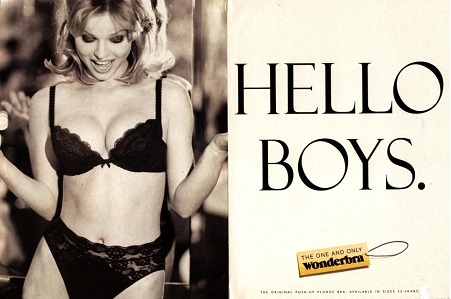SETTING A BRAND APART |
 |
| COLM CAREY ON DECIDING ON THE BASIC RULES FOR CREATIVE SUCCESS |
With commentators speaking cautiously about an end to the worst of the recession, the issues of value and creativity are coming up for discussion. A speaker at the recent IAPI rant night urged agencies to have the courage to charge what they believe they are worth. At the Marketing Society seminar on creativity, strategic planner Karen Hand quoted design guru Paul Rands agreement with Apples Steve Jobs – I will solve your problem and you will pay me – as to how clarity and mutual respect in a relationship can lead to great things.
Andy Sandoz, creative partner at Londons Work Club agency, advised clients and agencies not to be afraid of failure but at the same time not to get stuck in failure. After all, many of the greatest inventions came about when people had the courage to keep going despite initial failures. At a recent digital conference a lot of time was give to talking about content, which is precisely what traditional advertising and marketing experts have discussed for years. There is nothing to beat great content whether its on a 48 sheet poster or a Facebook page. The message appears to be getting through to those who thought social media was all about being there and being loud, rather than about being there and being different.
Addressing the AAI toolkit seminar, Publicis creative director Ger Roe spoke about how content is best left to those who know how to do it. His explanation on how the iconic Hello Boys poster, created for Wonderbra by Trevor Beattie, could have been just another lingerie ad was a reminder that we should pay greater heed to the Paul Rand-Steve Jobs contract.
ADVERTISING INSANITY
The ties between creative content and research have long been strained. Since research operates in the rational sphere and people tend to like what they have known before better than something new, gauging how new creative content might impact on a brand is tricky. The same principle is shown up when a band focuses on new material at a concert.
The classic 1984 Apple Macintosh Superbowl commercial bombed in research because it looked very dark, cold and menacing. People just did not like it. In his book The Insanity of Advertising, former Apple account manager Fred Goldberg tells how the concept scored a measly five on a 43-point scale designed to predict the success of an ad.
But Goldberg was so convinced of his concept that he didnt share the research results with his bosses. What happened next became part of adland history. Goldberg held his nerve and Apple became clearly set apart from IBM, proving the point made by Boys and Girls Pat Stephenson at the Marketing Society, that creativity is a key differentiator in business.
CUSTOMER UNDERSTANDING
Attempts to come up with a solid theory of how to measure advertising effectiveness, before a campaign runs, generally end in failure. Like a politicians career some enjoy a period in the limelight, hailed as the next big thing. But ultimately they tend to lead to the production of formulaic content designed to score well on the research tool.
Great advertising is based on great creativity and that means doing things that people might not like at first glance. A clear understanding of how consumers perceive a brand with a focus on where it succeeds and fails to meet their needs is a good starting point in guiding a creative strategy. But it is the men and women with creative talent who see the world differently who offer the possibility of connecting powerfully with the consumer.
Award-winning British creative director Dave Trott advises marketing and advertising people to stop being experts in marketing and advertising and to behave and think like ordinary people in order to watch themselves from the inside and really understand who and with what they are dealing. Customer insights are not lying around waiting to be picked up like pebbles on a beach. They are little nuggets that have to be washed from the sand.
Listen to a lot of words and allow people time to talk before they reveal the insights which guide great marketing and advertising ideas. It means taking time and listening, not half-heartedly, but actively. It means listening not for responses to your questions but for spontaneous and unexpected quips which may never have crossed your mind to explore.
Try this. Next time a colleague asks to speak with you about something of importance to them, spend the first minute gazing around you, checking your phone for emails and tweets, looking over their shoulder at what is happening behind. Then switch and spend the next minute listening intently, as if this was the most important conversation you have ever had. Now ask you colleague what emotions they felt during the first and during the second minute. Their explanation holds the key to connecting with your customer.
Comments on this article are welcome atcolm@theresearchcentre.ie
 |
FRIENDLY GESTURESpeaking at the Association of Advertisers in Ireland (AAI) breakfast, Publicis creative director Ger Roe said content is best left to those who know how to do it. He made the point by referring to Wonderbras iconic Hello Boys poster with Czech model Eva Herzigova. |









